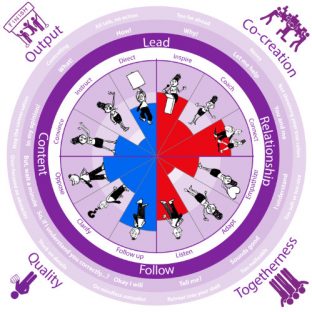We live and work in a volatile world. With acronyms like VUCA becoming more commonplace (that’s volatility, uncertainty, complexity, and ambiguity, by the way), leaders face growing difficulties when trying to ‘cut through the noise’.
It’s not that we don’t have compelling reasons to communicate change and get people onboard. Just that sometimes, we need to really drive home a point, and even cold hard numbers won’t cut it. In times like these, shocking facts can tap into the ‘Why’ of your argument to engage and inspire.
Let’s use an example, slightly adapted from my professional experience.
“It’s Time To Cut Costs”
Most executives I’ve worked with have been familiar with this message. It might be part of a drive for cost-efficiency or necessary response to consumer demands, but cost-cutting is certainly not an original concept. One leader, in particular, frustrated with inefficient materials sourcing at her organization, did what most of us would do. She decided to make it visual—colorful, even—with facts and figures.
The results she got when presenting to her team were lukewarm, to say the least. Her PowerPoint got nods around the table, and some agreed verbally with her premise. “But nobody went any further than that,” she complained to me later, “Nobody seemed to care.”
So we thought together about why this might be, because most of us will agree that presentations aren’t really inspiring. And with behavior change as the desired goal, we need to engage others’ emotions.
According to goal-setting theory, we need to spark intent, and for that, our communication goal should move beyond simple content delivery to persuasion. “Maria” and I decided that she would go at it again with a different aim: this time with a more human, relationship-oriented approach to communication.
Searching for innovative ideas from her team, this time Maria and her team opened a different way. “Each month, we spend the equivalent of twelve working days trying to manually source materials.”
Emotional Charging
By emotionally charging the message, Maria and her team had made it relatable. By reworking the same shocking accounting facts in a human way, she’d essentially made the message more meaningful—more tangible—to her team, and opened the discussion for generating new pathways.
Implicit in her message were more questions. “How else would you prefer to spend twelve working days?” “Can you think of a way to make that possible?”
Her people were much more forthcoming, this time. Together, they started brainstorming—with their imagination already ‘on’, it was much easier to see different possible approaches. By making it visual in a human way, she’d got their point across.
Since that particular experience, I’ve been a proponent of shocking facts—when and where they will help leaders inspire. In fact, it has its own place in the Sphere of Influence, which we regularly use to develop our executive clients’ communication skills.

On the left, in blue, there is a place for content-focused influencing styles (the facts and figures); and on the right—where Maria soon moved to—we acknowledge and adapt our communication to focus on human relationships. The “Why” is still the same, but the message is framed for humans. Real people with imaginations and personal experiences they can use to create meaning.
In a nutshell, then, sometimes the data points are better left for the machines.
Over To You
One word of warning: shocking facts aren’t an excuse to compromise your integrity as a leader. It’s possible to craft a meaningful, impactful message without overselling or misleading your team. So how might you get started? Hopefully, these tips might help:
– Rethink how you’re quantifying. Time is a metric—even a currency—that we can all relate to. Could you reframe percentages as hours, days, or weeks? Use ‘human’, relatable metrics where possible.
– Compare meaningful metrics. What else could you achieve with that 20% wasted expenditure? Could you grow your team? Invest in new product development? Even donate some to charity?
– Help others visualize a positive outcome. The psychology of goal-setting shows that ‘approach’ goals aimed at a desirable future are more valuable than ‘avoidance’ goals. Once you’ve made your point, what good things could you focus your collective energy on together? Could you brainstorm pathways forward, rather than just ‘fixing’ what’s ‘wrong’?
Can you recall a time when you’ve used shocking facts to communicate? Or have you been on the receiving end of some shocking facts before? Please do share them with me on our Time To Grow Global LinkedIn!

Govert is Time To Grow Global’s Managing Partner, specializing in Strategy Facilitation, Leadership development and Organisational performance. Reach him on our Time To Grow Global LinkedIn.



